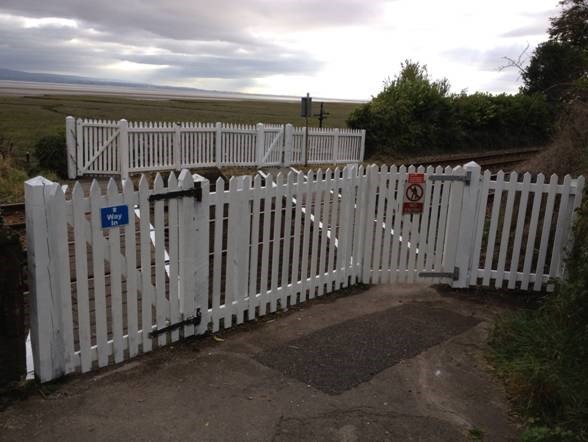Monday 16 Dec 2013
Network Rail to seek closure of Grange foot crossing
- Region & Route:
Network Rail has confirmed that it is seeking to close the footpath crossing over the railway at Bailey Lane, Grange-over-Sands. A request for a rail crossing diversion order to allow the crossing to permanently close has been made to Cumbria County Council today.
Network Rail has previously made safety improvements at the crossing and in 2006 constructed a new subway underneath the railway to provide an alternative route for pedestrians, removing the need to cross the tracks. Despite the new subway, previous attempts to close the crossing have failed with the latest reported ‘near miss’ occurring in September this year.
Martin Frobisher, area director for Network Rail, said: “The surest way to remove the risk of someone being struck by a train at a level crossing is to close it. Despite making safety improvements at Bailey Lane and providing an alternative route, this crossing is still well used and represents a real risk to those people who continue to use it. We have had incidents at this crossing in the past but Network Rail do not want to wait for a tragedy to occur before acting. That is why we have asked the local authority for a diversion order to be made.”
Surveys carried by Network Rail showed that Bailey Lane was used by over 4000 people over nine days this summer including children, people with push bikes and mobility scooters. A three-year-old child died at the crossing in 1988 and there have been a number of near misses with the most recent happening in September when a train travelling at 50mph came within seconds of striking a pedestrian on the crossing.
The alternative route which was constructed by Network Rail in 2006 involves a 350-metre diversion via a fully accessible subway underneath the railway to reach the promenade.
Notes to editors
The majority of crossing closures carried out by Network Rail involve ‘user worked’ crossings, which are mostly on private land with no public right of way. While often situated in rural areas, many cross busy main lines. The barriers or gates need to be operated by the person crossing and warning measures include miniature warning lights, signs or telephones. In many cases an alternative access for the user is either available or has been provided to secure closure. Around 125 footpath crossings have also been closed as part of Network Rail’s improvement programme and footpath crossings are the focus of the company’s current TV advertising campaign: See Track/Think Train.
Network Rail has a £130m investment programme to improve level crossing safety. This includes:
- Replacing footpath crossings with alternative routes or footbridges
- Installing warning lights as an additional safety measure at footpath crossings
- A new schools programme – Rail Life – teaching both primary and secondary school children about how to stay safe when crossing the railway
- Rolling out more camera enforcement vans
- Investing in new technology
- Introducing new cost effective barriers to open crossings
- Employing more than 100 new dedicated level crossing managers
- Community safety managers who work closely with local groups, councils and schools to raise awareness
Visit http://www.networkrail.co.uk/level-crossings/types-of-level-crossing/footpath-crossings/ for more information and guidance on how to use them safely.
See Network Rail's TV advert See Track/Think Train http://www.youtube.com/networkrail
Contact information
Passengers / community members
Network Rail national helpline
03457 11 41 41
Latest travel advice
Please visit National Rail Enquiries
Journalists
Network Rail press office - North West & Central Region
0330 854 0100
NWCmediarelations@networkrail.co.uk
About Network Rail
We own, operate and develop Britain's railway infrastructure; that's 20,000 miles of track, 30,000 bridges, tunnels and viaducts and the thousands of signals, level crossings and stations. We run 20 of the UK's largest stations while all the others, over 2,500, are run by the country's train operating companies.
Usually, there are almost five million journeys made in the UK and over 600 freight trains run on the network. People depend on Britain's railway for their daily commute, to visit friends and loved ones and to get them home safe every day. Our role is to deliver a safe and reliable railway, so we carefully manage and deliver thousands of projects every year that form part of the multi-billion pound Railway Upgrade Plan, to grow and expand the nation's railway network to respond to the tremendous growth and demand the railway has experienced - a doubling of passenger journeys over the past 20 years.
Follow us on Twitter: @networkrail
Visit our online newsroom: www.networkrailmediacentre.co.uk

